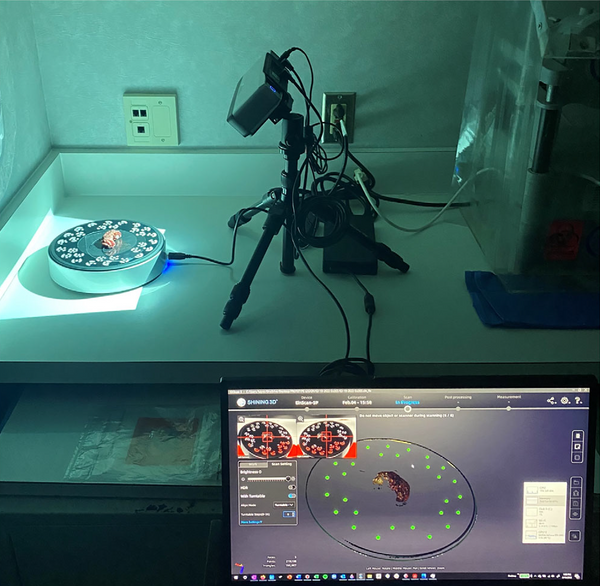How 3D Scanning Ex-vivo specimen Can Assist Surgeons In The Operating Room | Einscan SP 3D Scanner
Share

In the field of oncologic surgery, achieving clear surgical margins is a challenging task. Numerous challenges exist in determining clear surgical margins for complete tumor removal while minimizing normal, unaffected tissue retention. Conventional evaluation methods require surgeons to exit the operative room, and perform intraoperative margin assessment by analyzing frozen cryosections, and consult with the pathologist resuming the surgery, which is inconvenient and time-consuming. Routine 3D scanning and specimen mapping represent an innovative approach to intraoperative and final pathology documentation, margin analysis, and surgeon-pathologist communication. Which is exciting!
Michael Topf of Vanderbilt University Medical Center’s Department of Otolaryngology has shown that 3D scanning and specimen mapping reduces the communication time between surgeons and pathologists by providing surgeons with quick feedback on ex vivo specimens in the operating room.
The EinScan-SP 3D Scanner was used to capture and digitally reconstruct the 3D surface topography of fresh ex vivo specimens. In a series of 40 cases, the median image acquisition was 8 min.

3D scanner setup during image acquisition with specimen on turntable, photo courtesy of Wiley Online Library
The resultant 3D model of the en-bloc resection specimen was exported in 3MF file format into mesh editing software for annotation (Meshmixer). The research team member will delineate each anatomic site and margin type onto the 3D model using a digital airbrush while executing standard FSA protocol. In every case, this procedure was carried out intraoperatively just after the surgical resection.

Specimen photographs (left) and virtual 3D models (right), photo courtesy of Wiley Online Library
The 3D model of the specimen with real-time annotations is displayed on a screen in the operating room, which provides a visual tool for the pathologist to communicate with the surgeon. Surgeons can now stay in the operating room and work with the pathologist on the analysis. Some surgeons noted that the frozen edges were clearly visible on the excised specimen, reducing ambiguity and allowing them and the pathologist to better understand each tumor's geometry.

The 3D CAD workspace is displayed on overhead monitors for surgeons to view while the pathologist reports the frozen section diagnosis at each site, photo courtesy of Wiley Online Library
3D specimen maps were also valuable in the postoperative setting. It augments the postoperative communication of permanent surgical margins and delivery of the final pathology report. Final 3D specimen maps were distributed among pathology attendings responsible for signing out each case to serve as a visuospatial reference for the case. 3D specimen maps were also distributed to surgeons as a supplement to the written pathology report to aid in the visualization of any positive or close margins.

“Virtual 3D specimen mapping creates a permanent 3D record of the gross morphology of the specimen. Precise anatomic locations of each tissue section and frozen into hematoxylin and eosin (H&E) slides are clearly documented, whereas currently, to our knowledge, there is no form of documentation which captures this important gross-level information, ” Michael noted.
3D scanning in the operating room has shown impressive results in reducing communication time between surgeons and pathologists and improving clear surgical margins. Try the Einscan SP or Einscan Pro 2X with your team today!
*All images in this article are based on the original article The computer-aided design margin: Ex vivo 3D specimen mapping to improve communication between surgeons and pathologists, which can be viewed at Wiley Onine Library.

